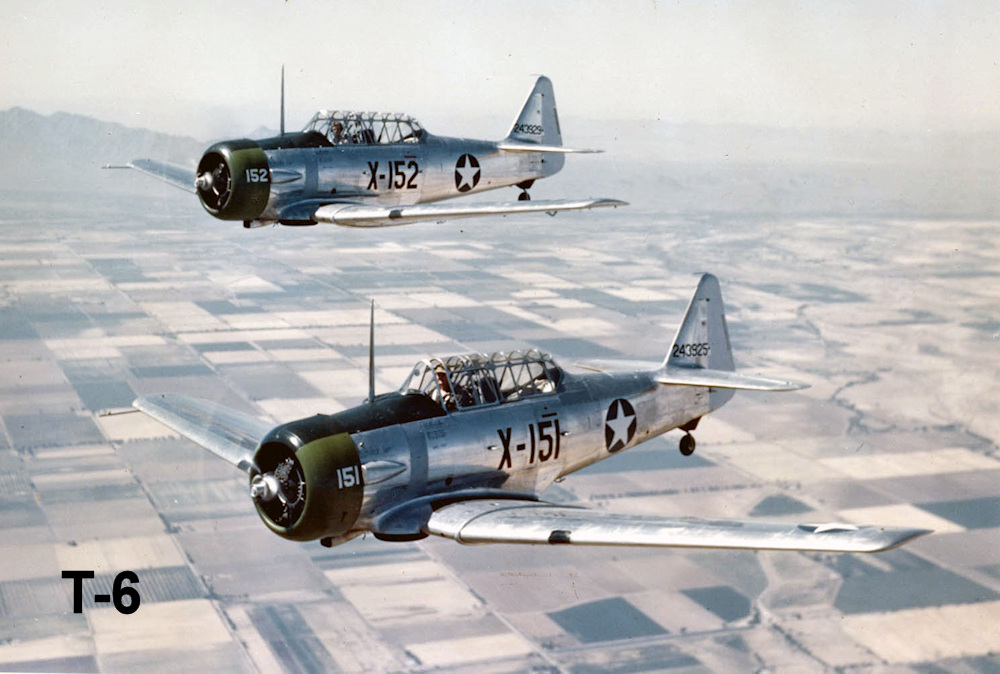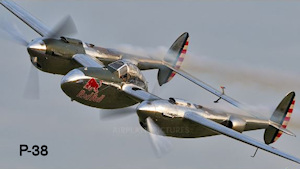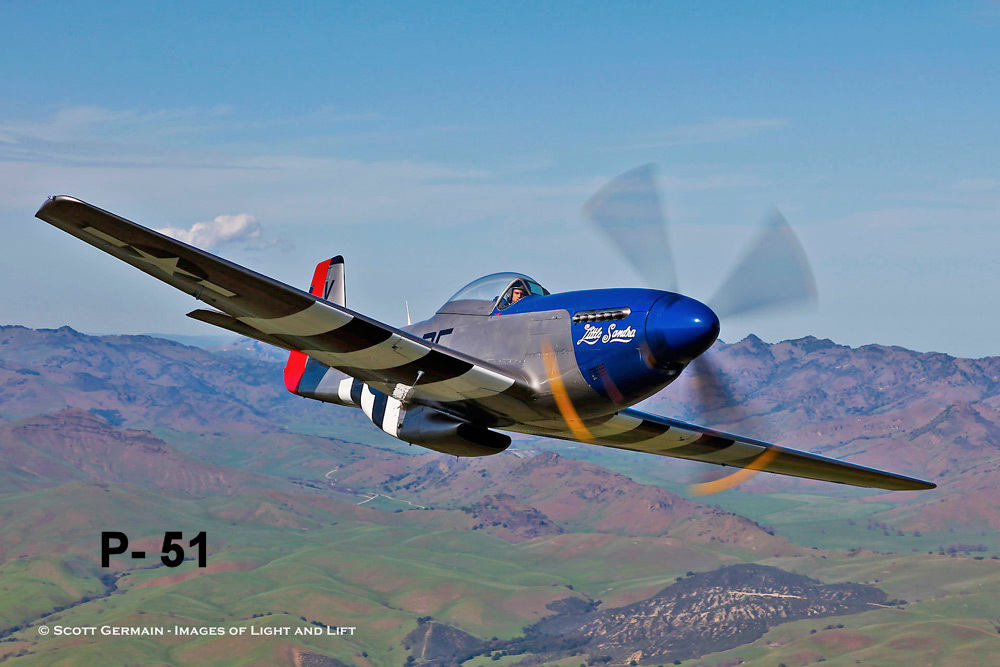Dad's War Stories - Fighter Pilot In Trouble
 My
Dad told me many war stories. He was a Sgt. in charge of ground crews maintaining
fighter planes used to train young pilots. The pilots would first train
in trainer planes like the T-6 Texan, then progress to the same plane they
would fly in combat. Davis Monthan AFB Arizona had an air strip so wide
that an entire squadron of fighters could take off in formation. 24 aircraft.
My
Dad told me many war stories. He was a Sgt. in charge of ground crews maintaining
fighter planes used to train young pilots. The pilots would first train
in trainer planes like the T-6 Texan, then progress to the same plane they
would fly in combat. Davis Monthan AFB Arizona had an air strip so wide
that an entire squadron of fighters could take off in formation. 24 aircraft.
My Dad was responsibie for 100 fighter planes. 12 hours a day, seven days a
week, two weeks straight, then a few days off, and back at it. Crews gassing
them up, changing the tires, adjusting, trimming, setting it up the way the
pilot wanted. Major engine overhauls. Once and a while Dad would go up with
the pilot to show Dad what needed done. His favorite plane was the P-38 Lightning,
a twin-engine fighter bomber the Germans called "The Fork-Tailed Devil"
(der Gabelschwanz-Teufel) The P-38 saw major action in both European and Pacific
theaters. Highly maneuverable. long range, well suited for reconnaisance photos.
 One
day a new squadron had completed their training and were taking off to fight
in the Pacific. On their first long flight they would fly to Hawaii and then
on to the Pacific Islands. When the squadron took off, they had to climb up
over mountains surrounding the base. As the young pilots climbed over the mountains,
the ground crew could hear that one of them was having engine trouble. The
engine stopped, and now the question was - could the pilot make it back to
base? Fighters are heavy and they don't have a lot of glide range. Landing
short of the strip could mean big trouble.
One
day a new squadron had completed their training and were taking off to fight
in the Pacific. On their first long flight they would fly to Hawaii and then
on to the Pacific Islands. When the squadron took off, they had to climb up
over mountains surrounding the base. As the young pilots climbed over the mountains,
the ground crew could hear that one of them was having engine trouble. The
engine stopped, and now the question was - could the pilot make it back to
base? Fighters are heavy and they don't have a lot of glide range. Landing
short of the strip could mean big trouble.
My Dad knew which pilot it was by his place in the formation, and he knew
the kid was a good pilot. The young pilot made it back to the landing strip,
and now my Dad prayed that it wasn't one of his planes that had conked out.
The crews stripped down the engine and found that the pistons had seized up
when the engine got hot climbing over the mountain.
When a new squadron took off to the Pacific, each plane had a fresh engine
rebuild. It turned out the pistons had been sized wrong when the engine was
rebuilt. The mechanics had measured the pistons cold instead of hot, so that
when they expanded they grew too large for the bores and seized up.
 Fortunately
for my Dad the engine work had been done by a private company working for the
base, and not by my Dad's crews. Most importantly, the young pilot was safe
and would fly again.
Fortunately
for my Dad the engine work had been done by a private company working for the
base, and not by my Dad's crews. Most importantly, the young pilot was safe
and would fly again.
During the Occupation of Japan at the end of the Pacific War, my Dad was responsible
for the maintenance of all P-51 Mustangs in Japan.
 My
Dad told me many war stories. He was a Sgt. in charge of ground crews maintaining
fighter planes used to train young pilots. The pilots would first train
in trainer planes like the T-6 Texan, then progress to the same plane they
would fly in combat. Davis Monthan AFB Arizona had an air strip so wide
that an entire squadron of fighters could take off in formation. 24 aircraft.
My
Dad told me many war stories. He was a Sgt. in charge of ground crews maintaining
fighter planes used to train young pilots. The pilots would first train
in trainer planes like the T-6 Texan, then progress to the same plane they
would fly in combat. Davis Monthan AFB Arizona had an air strip so wide
that an entire squadron of fighters could take off in formation. 24 aircraft.
 One
day a new squadron had completed their training and were taking off to fight
in the Pacific. On their first long flight they would fly to Hawaii and then
on to the Pacific Islands. When the squadron took off, they had to climb up
over mountains surrounding the base. As the young pilots climbed over the mountains,
the ground crew could hear that one of them was having engine trouble. The
engine stopped, and now the question was - could the pilot make it back to
base? Fighters are heavy and they don't have a lot of glide range. Landing
short of the strip could mean big trouble.
One
day a new squadron had completed their training and were taking off to fight
in the Pacific. On their first long flight they would fly to Hawaii and then
on to the Pacific Islands. When the squadron took off, they had to climb up
over mountains surrounding the base. As the young pilots climbed over the mountains,
the ground crew could hear that one of them was having engine trouble. The
engine stopped, and now the question was - could the pilot make it back to
base? Fighters are heavy and they don't have a lot of glide range. Landing
short of the strip could mean big trouble. Fortunately
for my Dad the engine work had been done by a private company working for the
base, and not by my Dad's crews. Most importantly, the young pilot was safe
and would fly again.
Fortunately
for my Dad the engine work had been done by a private company working for the
base, and not by my Dad's crews. Most importantly, the young pilot was safe
and would fly again.